Insights
Key insights for New Zealand Energy Scenarios – TIMES-NZ 2.0
1. Energy emissions decline strongly in both scenarios
2. Demand for fossil fuels decreases significantly in both scenarios
3. Transport emissions fall dramatically
4. There is an ongoing role for gas
5. Energy efficiency plays a key role in decarbonisation
6. Major increases in electricity demand and electrification
7. Storage plays a key role in the electricity system
8. Highly renewable electricity system
1. Energy emissions decline strongly in both scenarios
2. Demand for fossil fuels decreases significantly in both scenarios
3. Transport emissions fall dramatically
4. There is an ongoing role for gas
5. Energy efficiency plays a key role in decarbonisation
6. Major increases in electricity demand and electrification
7. Storage plays a key role in the electricity system
8. Highly renewable electricity system
1. Energy emissions decline strongly in both scenarios
Both scenarios show strong reductions in energy emissions. In Tūī, energy emissions decline to 10 Mt CO2-e/year in 2050 while in Kea they fall further to 6.5 Mt CO2-e/year. Moreover, Kea’s more rapid emissions decrease means that the model output indicates cumulative emissions through to 2050 as almost 25% lower in the Kea scenario than the Tūī scenario.
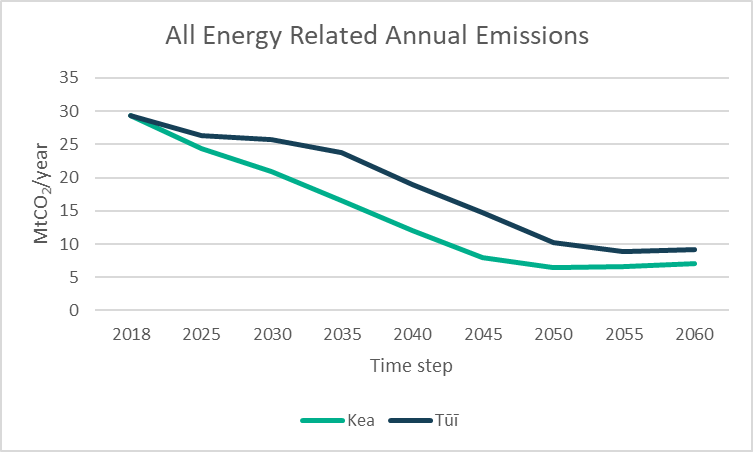
Figure 1: Total energy related annual emissions TIMES-NZ 2.0 Kea and Tūī scenarios
2. Demand for fossil fuels decreases significantly in both scenarios
Both scenarios indicate that between 2018 and 2050, energy demand (excluding feedstocks) met by fossil fuels goes from 63% to 22% under Kea and 33% under Tūī. In some sectors, particularly road transport, food processing, residential and commercial, fossil-fuel demand falls to a small fraction of current levels. Most remaining demand is in hard-to-abate sectors (such as aviation, shipping and fishing). This means renewables provide 78% of energy demand (excluding for feedstocks) under Kea and 67% under Tūī in 2050.
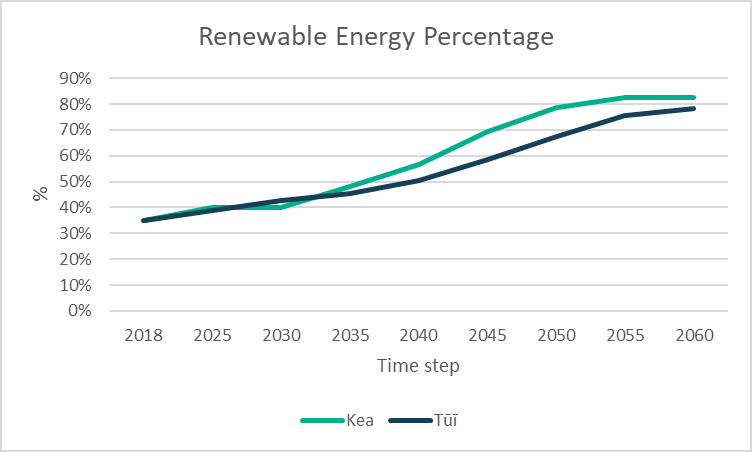
Figure 2: Total renewable energy percentage TIMES-NZ 2.0 Kea and Tūī scenarios
3. Transport emissions fall dramatically
Both scenarios see a transition of the light vehicle fleet from being almost completely fossil-fuelled to being almost completely electric by 2050 in Kea and by 2055 in Tūī. Kea sees markedly slower growth in the overall number of vehicles due to a lower distance travelled assumption in the model. Both scenarios also show conventional hybrid vehicles as transitional technologies as a result of modelled economic and supply limitations for battery electric vehicles.
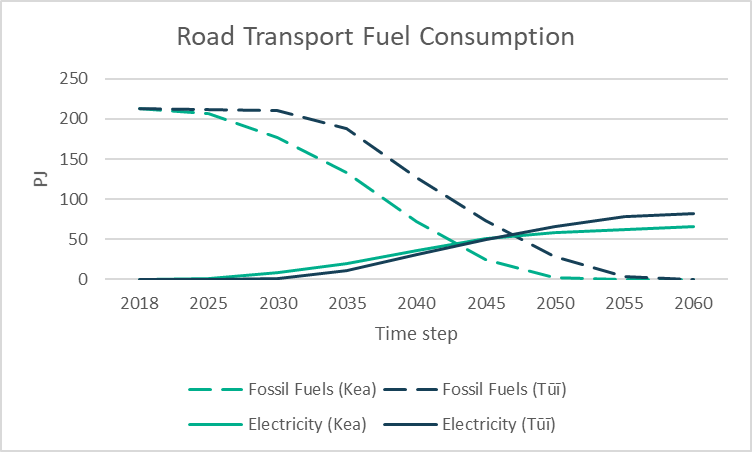
Figure 3a: Road transport consumption of fossil fuels and electricity TIMES-NZ 2.0 Kea and Tūī scenarios
There is a large reduction in the use of fossil-fuel across the heavy vehicle fleet in both scenarios. Transport emissions fall dramatically in line with the fall in road transport fossil-fuel. In both scenarios the residual emissions are from marine and aviation transport. The steeper reduction in Kea’s transport emissions are from the more rapid uptake of EVs and lower growth in vehicle numbers compared to Tui.
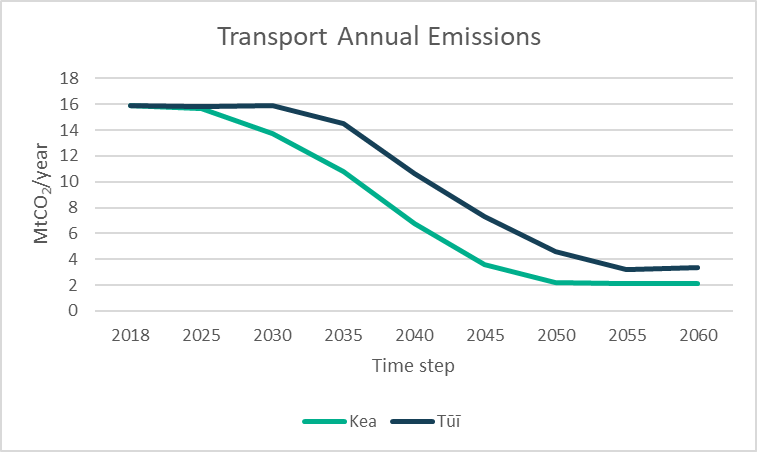
Figure 3b: Transport annual emissions TIMES-NZ 2.0 Kea and Tūī scenarios
4. There is an ongoing role for gas
Overall, gas demand could be met by domestic supply, avoiding any import of LNG or other substitutes. Gas use continues in the industrial and commercial sectors but drops out of the residential sector by 2040 in both Kea and Tūī scenarios, due to a combination of rising carbon prices and increasingly attractive alternative technologies, making switching away from gas economically optimal. Winter gas peaking for electricity generation is retained. Note the model assumes continued operation and maintenance of existing gas production and delivery infrastructure and that current estimated reserves remain available and deliverable.
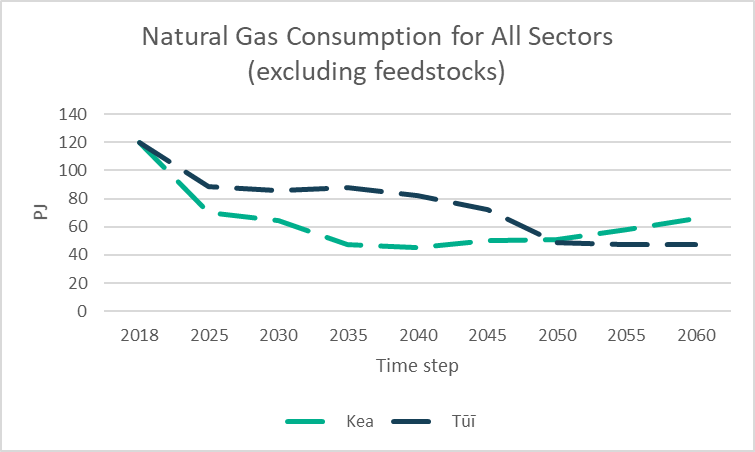
Figure 4: Total consumption of Natural Gas (excluding feedstocks) TIMES-NZ 2.0 Kea and Tūī scenarios
5. Energy efficiency plays a key role in decarbonisation
In both scenarios adoption of more efficient technologies increases energy efficiency and results in significantly decreased energy consumption. For example, road transport energy-use per distance travelled reduces by nearly 80% as a result of EV adoption because EVs are much more efficient than the fossil-fuelled ICE technologies they replace. Similarly, the electricity required for residential lighting falls by 70% as incandescent lights and fluorescent lights are phased out and replaced by more efficient LED options. 35% increase in industrial energy efficiency – mainly due to electric boilers and conversion to biomass. 70% increase in agricultural energy efficiency – mainly due to fuel switching off-road fuels and high temperature heat pumps in indoor cropping.
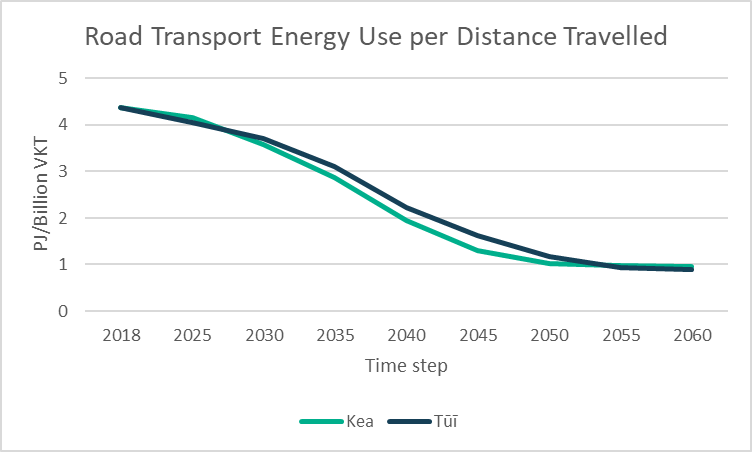
Figure 5: Road transport energy use per vehicle-kilometres travelled TIMES-NZ Kea and Tūī scenarios
6. Major increases in electricity demand and electrification
Electrification across all sectors results in electricity demand roughly doubling in both scenarios, from 144 PJ in 2018 to around 270 PJ. Electricity supplies up to 59% in Kea and 54% in Tūī of all energy demand by 2050. Under both scenarios, this increased demand is met by very large increases in wind generation accompanied by large increases to solar (primarily grid-scale) in later years by the model. Under both scenarios, winter gas peaking is retained, and there is a gradual decline in geothermal generation. Under the Tūī scenario, hydro generation expands where possible, reducing dependence on gas peakers.
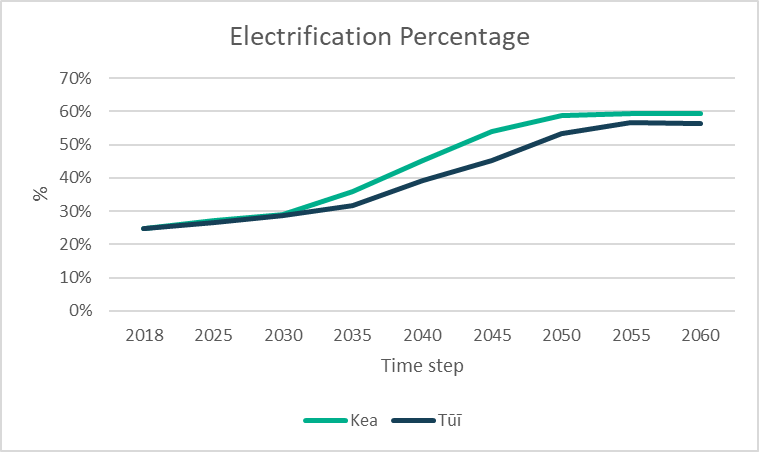
Figure 6: Electrification percentage TIMES-NZ 2.0 Kea and Tūī scenarios
7. Storage plays a key role in the electricity system
Both TIMES-NZ scenarios use electricity storage to meet demand peaks, particularly from lithium-ion batteries, with capacity from storage technologies of 1.9 GW in Kea and 2.9 GW in Tūī by 2050. Both scenarios make limited use of large-scale pumped hydro from 2050 onwards, while Tūī makes greater use of battery storage. TIMES-NZ does not specifically model dry years, so the storage requirement findings represent average hydro years only.
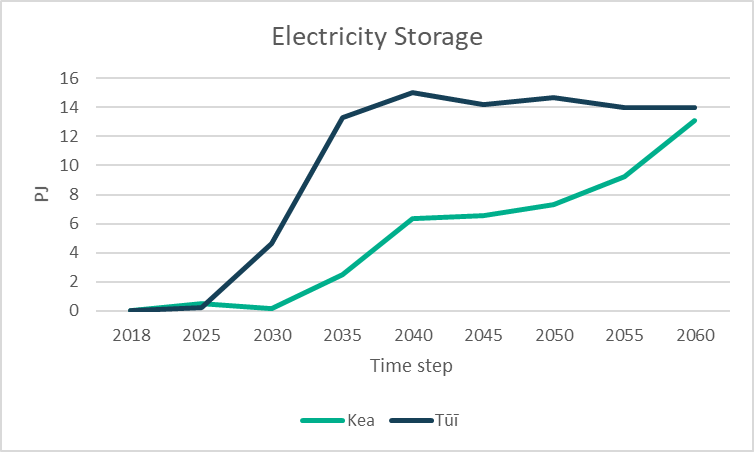
Figure 7: Electricity storage TIMES-NZ 2.0 Kea and Tūī scenario
8. Highly renewable electricity system
Both scenarios converge on very high renewable electricity percentage of around 95% from 2030 onwards. Both scenarios continue to use natural gas as a flexible fuel for meeting electricity daily and seasonal peak demands.
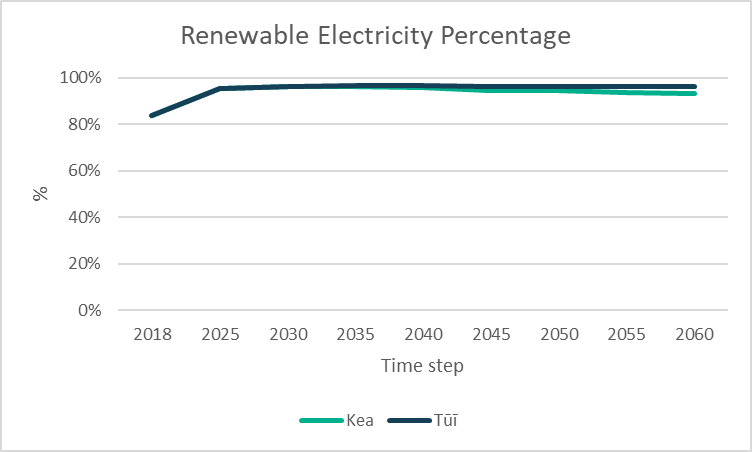
Figure 8: Renewable electricity percentage TIMES-NZ 2.0 Kea and Tūī scenarios
